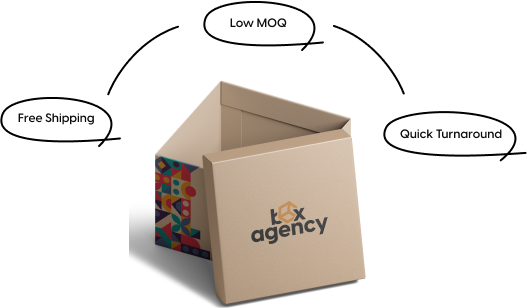What is a Dieline in Packaging? Core Components & Importance
In packaging design the dieline plays a basic part in guaranteeing the ultimate product is both useful and visually appealing. A dieline is a blueprint or template that shows how packaging will be cut folded and gathered. It is direct for manufacturers and designers to guarantee the packaging fits the item accurately and looks incredible on the rack.
Without an exact dieline and the production process can face costly delays and errors. Understanding dielines and their components is important to making packaging that works proficiently and effectively.
What is Dieline?
A dieline is a template or outline used in the packaging design process. It incorporates all the fundamental cut lines, fold lines, and perforation marks to guarantee that the packaging can be constructed properly. The dieline also indicates where logos content and other design components will be placed. The essential reason for dieline is to serve as a direct during the production of packaging.
It guarantees that the design is properly translated from a digital format to physical packaging. It helps to play down errors during manufacturing and guarantees the packaging fits the product accurately. A dieline also shows the precise arrangement of branding and other visual elements to make packaging that is visually appealing and simple to assemble.
5 Core Components of a Dieline

A dieline is an outline utilized for packaging design, laying out the shape, folds, cuts, and creases required. It ensures proper fit and functionality. Here are a few components:
Cut Lines
Cut lines are the boundaries where the packaging will be physically cut out. They characterize the edges of the packaging and are basic for the final shape of the box bag or other package types. These lines direct cutting machines to precisely trim the packaging material to the proper estimate and shape. Without clear and exact cut lines the packaging may not fit together properly causing delays and potential rework.
Fold Lines
Fold lines indicate where the packaging should be folded during assembly. These lines guide manufacturers on how to fold the material to make a 3D package. Fold lines are key for boxes and other folded packaging types. Incorrect fold lines can result in misaligned packaging that does not close accurately or sit properly on shelves. Well-defined fold lines guarantee that packaging fits together as intended and maintains its basic integrity.
Perforation Lines
Perforation lines are used to make a tearable area in the packaging. These lines consist of little evenly spaced cuts that make it simple for the consumer to open the packaging or remove a section of it. For instance, perforation lines are regularly used on packaging that should be opened effectively like snack bags or item cartons. Properly set perforation lines improve client experience and make the packaging easier to handle.
Score Lines
Score lines are similar to fold lines but are used to make a crease instead of a full fold. These lines are typically used on thicker materials or when a sharp and exact fold is required. Scoring reduces the risk of the material cracking or breaking when it is bent. Proper scoring ensures that the folds are clean and the packaging holds its shape during shipping and dealing with. They are particularly important for packaging made from rigid materials like cardboard and chipboard.
Bleed Area
The bleed area is the additional space around the edges of the packaging design that extends past the cut lines. It guarantees that the design extends to the edge of the packaging indeed after it is cut. There could be small unprinted borders around the packaging when it is trimmed without a bleed area. The bleed area ensures that the design will cover the entire surface of the package giving it a professional and polished look.
Why Are Dielines Important in Packaging?

Dielines are basic to the packaging design preparation because they guarantee quality and precision. By giving a clear direction to producers they decrease the chance of errors during production. They also make it easier to visualize how the final item will look which makes a difference when designers alter any elements that might need improvement whether it is for gift or food box packaging.
A well-prepared dieline saves time during production and guarantees the packaging fits the item perfectly. Dielines offers assistance to smooth the workflow by decreasing the number of modifications and adjustments needed during production.
Ensures Quality and Accuracy
A dieline ensures that the packaging is delivered with precision and accuracy. It gives detailed instructions for each cut fold and perforation needed to gather the packaging. By following a dieline the manufacturer can replicate the design exactly as intended which guarantees the product’s packaging is not as visually appealing but also functional. This helps to preserve high measures in production and deliver steady results across multiple units.
Reduces Production Errors
Employing a dieline reduces the chance of mistakes during production. When all the cutting, folding, and perforating instructions are clearly defined the risk of human error decreases. A well-constructed dieline guarantees that all materials are handled the same way across every unit produced. This reduces the requirement for rework and saves both time and assets during production.
Improves Production Workflow
A clear dieline improves the general workflow of the production process. It gives a detailed map of the packaging and makes a difference in manufacturers’ understanding of precisely what needs to be done at each area of production. This makes it easier to arrange product runs, diminish delays, and avoid perplexity. An effective dieline contributes to smoother communication between manufacturers and designers which makes the production process more efficient.
Saves Time and Costs
Having an accurate dieline in place can spare both time and money. By eliminating the need for multiple revisions and guaranteeing the packaging is delivered accurately at the primary time manufacturers can avoid costly mistakes. A dielines guarantees that production flows easily and decreases the time it takes to make each package. This ultimately leads to cost savings and quicker delivery to the market.
How to Create an Accurate Dieline for Packaging?
Making an accurate dieline includes exact measurements, accounting for fold lines, cuts, and bleed areas. It guarantees appropriate alignment and structure for reliable, proficient packaging production.
Step-by-Step Dieline Creation Process
The dieline process begins with understanding the packaging requirements including the size, shape, and structure of the ultimate product. Designers make a digital file based on these details and check key features such as cut lines, fold lines, and score lines. After the initial dieline is manufactured, it is reviewed and balanced for accuracy before being sent to production. It is important to double-check the estimations and arrangements of all elements to avoid any issues during production.
Best Software for Dieline Design
Popular software programs for making dielines incorporate Adobe Illustrator and ArtiosCAD. Adobe Illustrator is broadly utilized since it permits creators to create detailed vector artwork with precision. ArtiosCAD is specifically outlined for packaging and dieline creation offering specialized devices for 3D modeling and structural design. Both programs offer assistance to designers in making exact dielines that can be directly utilized by manufacturers for production.
Ensuring Dieline Accuracy
Accuracy is critical when making a dieline to ensure the final packaging fits together correctly. Designers must take care to check that the measurements are exact and that all components are properly aligned. Testing the dieline is also basic to confirm that the packaging works as expected. Prototypes can be created to test the folding cutting and get together before moving to full-scale production. This helps to ensure the packaging will work in real-world conditions.
Key Considerations for Dieline Success
When making a dieline it is important to keep several key considerations in mind. Structural integrity is one of the most imperative factors. The dieline must be designed in a way that permits the packaging to hold the item safely while moreover while also being easy to assemble. The choice of paper or material type can affect the performance of the packaging. The dieline should be optimized for the material used to avoid any issues during production or assembly.
Make Sure Structural Integrity
Structural integrity is vital to guarantee that the packaging will work appropriately and secure the item during transport and show. The dieline should be designed to guarantee that the packaging is strong enough to hold the weight and shape of the item. Creators ought to pay consideration to areas where the package may be subject to push such as corners and edges to guarantee they are reinforced for durability.
Choosing the Right Paper/Material Type
Choosing the right paper or material for the packaging is crucial for the common viability of the packaging. The dieline should be made with the specific material in mind whether it is cardboard, paperboard, or another material. Each material behaves differently when folded, cut, or scored so the dieline must be balanced accordingly. Using the wrong material or incorrect dieline adjustments can lead to production issues or weak packaging.
What Are The Most Common Mistakes When Creating A Dieline?
Communication gaps often lead to issues when designers make dielines without manufacturer confirmation. It is necessary to collaborate with manufacturers to guarantee the dieline fits the machine and meets manufacturing requirements with appropriate checks throughout the design and printing process. Errors in design may emerge if the finished packaging does not account for the product’s weight, ingredients, shipping conditions, and rack life.
What Role Does Dieline Play In Eco-Friendly Packaging?
Dielines play an important role in environmentally friendly packaging by making a difference in minimizing waste. A well-designed dieline guarantees that the packaging material is utilized efficiently with minimal scrap produced during cutting. This packaging frequently uses sustainable materials that require particular dieline adjustments to ensure they perform accurately.
Who Creates The Packaging Dieline?
Packaging dielines are ordinarily created by proficient graphic designers or packaging engineers. These specialists have a profound understanding of packaging structures and materials and use specialized software to form accurate dielines. They work closely with producers to guarantee the dieline is feasible for production which adjusts to the brand’s design requirements.
Where Can You Get Professional Dieline Packaging?
Professional dieline packaging can be made by packaging design agencies or freelance packaging designers. Box Agency offers dieline creation services as part of our overall design and production process. If you wish to offer assistance making a dieline it is a great idea to work with our talented designer who has experience in packaging to guarantee the finest comes about.




